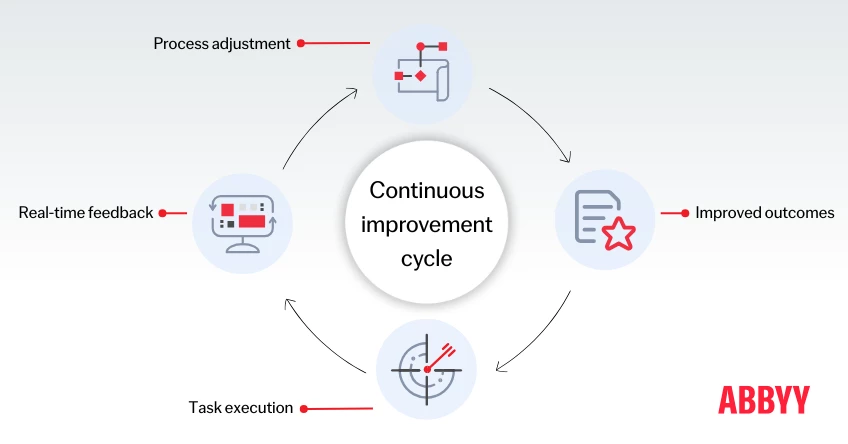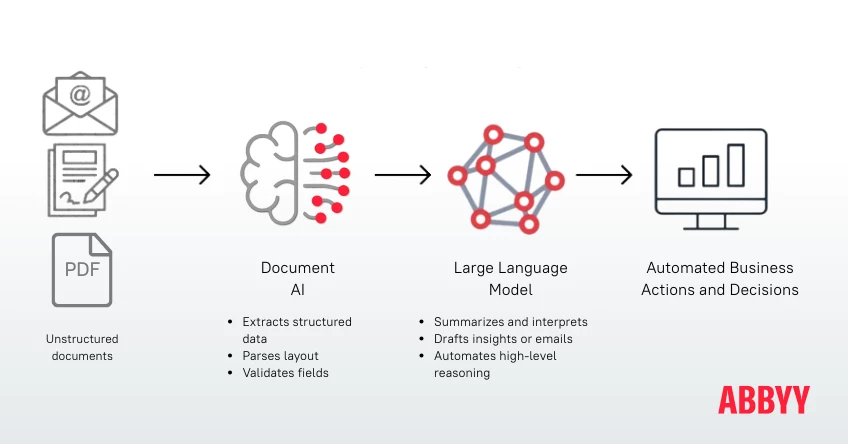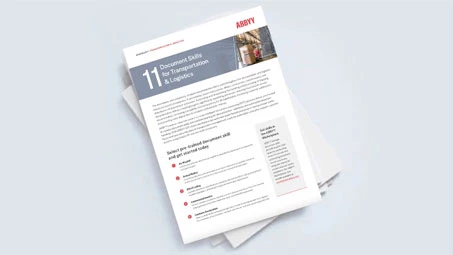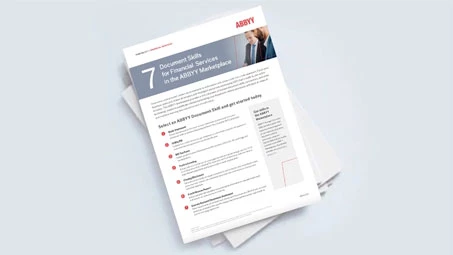
If you ask business leaders about their investments in AI tools, you’ll often hear the same complaint: The technology hasn’t delivered what it promised. And this is typically because enterprises aren’t able to measure its ROI.
Although business leaders recognize AI’s potential and are pouring money into it, too often, these funds get spent without a clear plan or purpose. Rather than identifying a root problem and implementing AI as a means to solve it, they are applying the technology just for the sake of it. It’s no surprise that we see expensive AI projects that never deliver outcomes, when no one defined what success should look like in the first place.
Successful AI projects that deliver measurable ROI and help organizations continuously improve their operations over time are grounded in an understanding of business processes (Process Intelligence), and a foundation of high-quality data.
AI solutions need high-quality information to make good decisions. Yet most automation, even when powered by the latest large language models (LLMs) and agentic systems, happens completely apart from the business data that drives outcomes.
What’s needed is a way to turn the messy, real-world content contained in structured, semi-structured, and unstructured business documents, from forms to contracts, into trusted, usable inputs for AI agents. For that, you need intelligent document processing (IDP). IDP provides AI systems with accurate business data, so they can actually learn and continuously improve.
Jump to:
The new AI competitive advantage: Continuous improvement
What stops LLMs and agents from continuous improvement?
How IDP evolved from an extraction tool to an AI enabler
IDP + Process Intelligence: Feedback engine for self-improving AI automation
Powering continuous improvement: IDP and Process Intelligence use cases
The new AI competitive advantage: Continuous improvement

Automation speeds up tasks, but continuous improvement refines and optimizes outcomes. Traditionally, continuous improvement was a manual, retrospective process. Companies looked back to analyze what went right or wrong, then adjusted for the future.
In the AI era, that’s changed. Continuous improvement now happens in real-time, powered by ongoing, data-rich feedback loops.
Instead of pausing to look back, AI systems operate with always-on visibility into performance across workflows. The systems also self-adjust in response to real-world inputs to optimize processes.
What stops LLMs and agents from continuous improvement?
AI tools promise autonomy and speed, but can only deliver those things given the right data. As a result, LLMs and agents often struggle to meet business expectations.
LLMs are input-dependent and prone to errors
LLMs perform only as well as the inputs they receive. If given structured, high-quality data, LLMs can produce reliable, trustworthy results. But unstructured data often forces LLMs to rely on inference and make guesses.
That’s what results in hallucinations and errors. IDP solves this problem by extracting semantically rich, structured data from messy real-world documents, then giving LLMs the clean inputs they need to produce accurate results.
AI agents require context to make the right decisions
AI agents are designed to make autonomous decisions, but they need context—such as document histories, data relationships, and broader process understanding—to do so reliably. Without context, agents can’t reliably handle dynamic business workflows where exceptions and edge cases are the norm.
IDP addresses this gap by extracting data from documents and interpreting that information with natural language processing (NLP). Agents are then able to access richer, more contextualized inputs. Process Intelligence (PI) complements this by providing the “map” of how work actually flows—monitoring process performance, identifying bottlenecks, and guiding agents’ actions within business rules and compliance frameworks.
Together, IDP and Process Intelligence provide the perception and context that ground AI agents in accurate data and process awareness, enabling sound, explainable, and autonomous decisions in real time.
LLMs and AI agents don’t inherently know, for example, whether a given number refers to a dollar amount, a quantity, or a risk score, but IDP provides that semantic clarity, while PI situates it within the right process stage or decision path. This combination grounds LLMs and agents in both accurate data and operational context, enabling them to make sound, explainable decisions in real time.
How IDP evolved from an extraction tool to an AI enabler
IDP started out as a basic optical character recognition (OCR) tool, but the technology has evolved to become truly intelligent. Today, modern IDP functions as an intelligence layer between raw business content and AI outcomes. It still extracts data but now understands it too, thanks to cognitive classification and NLP. And because machine learning allows IDP to learn from feedback, the technology keeps improving to adapt in a world where both content and decisions move fast.

Making agentic AI trustworthy with IDP
By transforming unstructured documents into clean, contextualized, and auditable data, IDP gives AI agents the clarity they need to make decisions and the transparency organizations need to trust them. After all, operationalizing agentic AI requires models to act autonomously and reliably.
That requires the structure and traceability of IDP, which can make certain that every action taken by an agent is grounded in accurate, validated inputs and leaves a data trail that supports compliance, oversight, and continuous improvement. In short, IDP bridges the gap between AI autonomy and enterprise accountability.
Building trustworthy LLMs with IDP-structured content
IDP also acts as a catalyst that makes generative AI more accurate. By converting documents that don’t follow pre-defined formats into structured, context-rich data that technologies can understand, IDP provides genAI models with the inputs they need to generate meaningful outputs.
Structured context means more relevant, domain-specific prompts for genAI. The verified information from IDP moves genAI away from generic assumptions so it can respond not with hallucinations, but in the language and logic of the business itself.
IDP + Process Intelligence: Feedback engine for self-improving AI automation
Intelligent automation requires both execution of tasks and a continued evolution of processes. The ability to self-improve through a feedback mechanism that connects document intelligence, decision-making, and process optimization is what brings the technology full circle.
That’s what ABBYY’s IDP platform offers. It extracts, classifies, and validates content from unstructured documents, turning contracts, invoices, forms, and emails into structured, reliable data. LLMs and AI agents then act on that data and trigger downstream actions.
Now, with the launch of ABBYY IDP Analytics, organizations gain another critical layer: insight into data quality itself. IDP Analytics monitors extraction performance to detect low-confidence results, anomalies, or data drift. These are key signals for improving LLM prompts and retraining agents that can be linked to the process intelligence solution ABBYY Timeline. Through these connected technologies, enterprises get a self-optimizing automation system for continuous improvement.
Powering continuous improvement: IDP and Process Intelligence use cases
Let’s take a look at what a full-loop solution looks like in action by following a claims processing workflow in the insurance industry, where document volume is high.
- IDP starts the process by pulling key information such as policy numbers and coverage details directly from submitted documents.
- PI then maps how those claims move through the workflow—tracking cycle times, handoffs, and exceptions.
- AI agents can then act on that structured data, cross-referencing it with policy rules and flagging inconsistencies.
- The result: Simple claims can be approved automatically.
In underwriting, IDP also streamlines risk assessments by extracting insights from historical claims and other relevant data.
What makes this system powerful is its ability to improve, both on its own and with human feedback. The entire process is visible: With real-time process intelligence tools, insurers can track performance, seeing where processes run well and where they back up. That feedback can then be looped back, so teams can fine-tune models.
Why ABBYY is the trusted partner for LLM + agentic success
With decades of expertise in document understanding, ABBYY stands at the forefront of intelligent automation as a leader trusted by global enterprises. Our Document AI and Process AI solutions provide the structured, context-rich data and end-to-end process visibility that LLMs and agentic systems depend on to perform accurately, reliably, and continuously improve over time.
If you're ready to make your LLM and agentic investments deliver real business outcomes, start with ABBYY. Get in touch with one of our experts to learn what our purpose-built AI solutions can do for your business.






